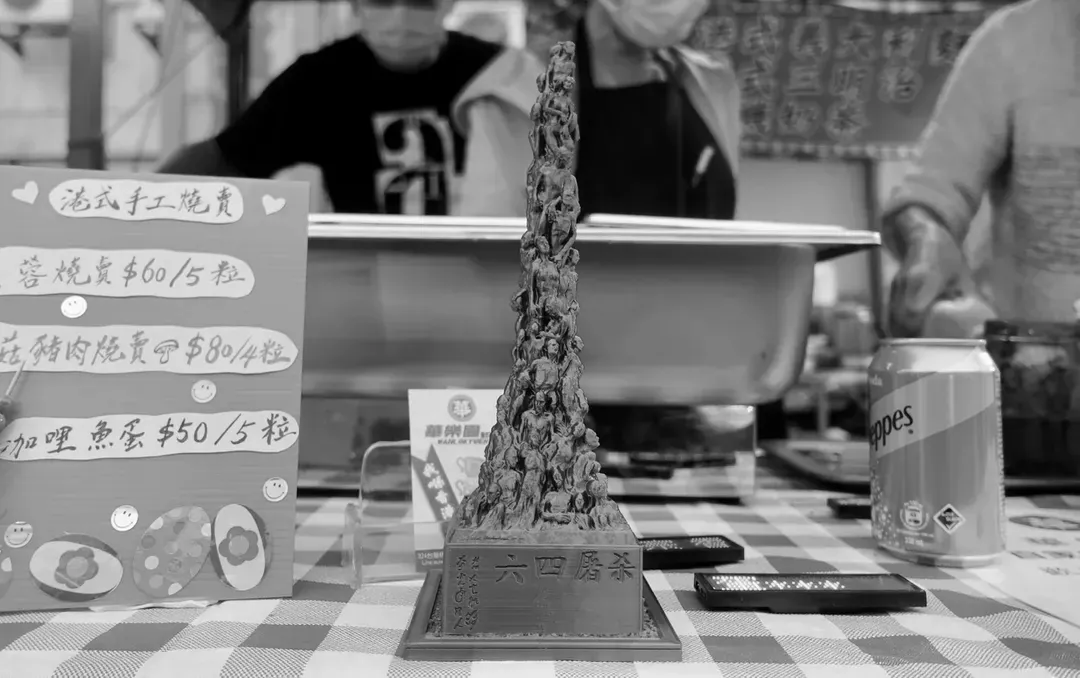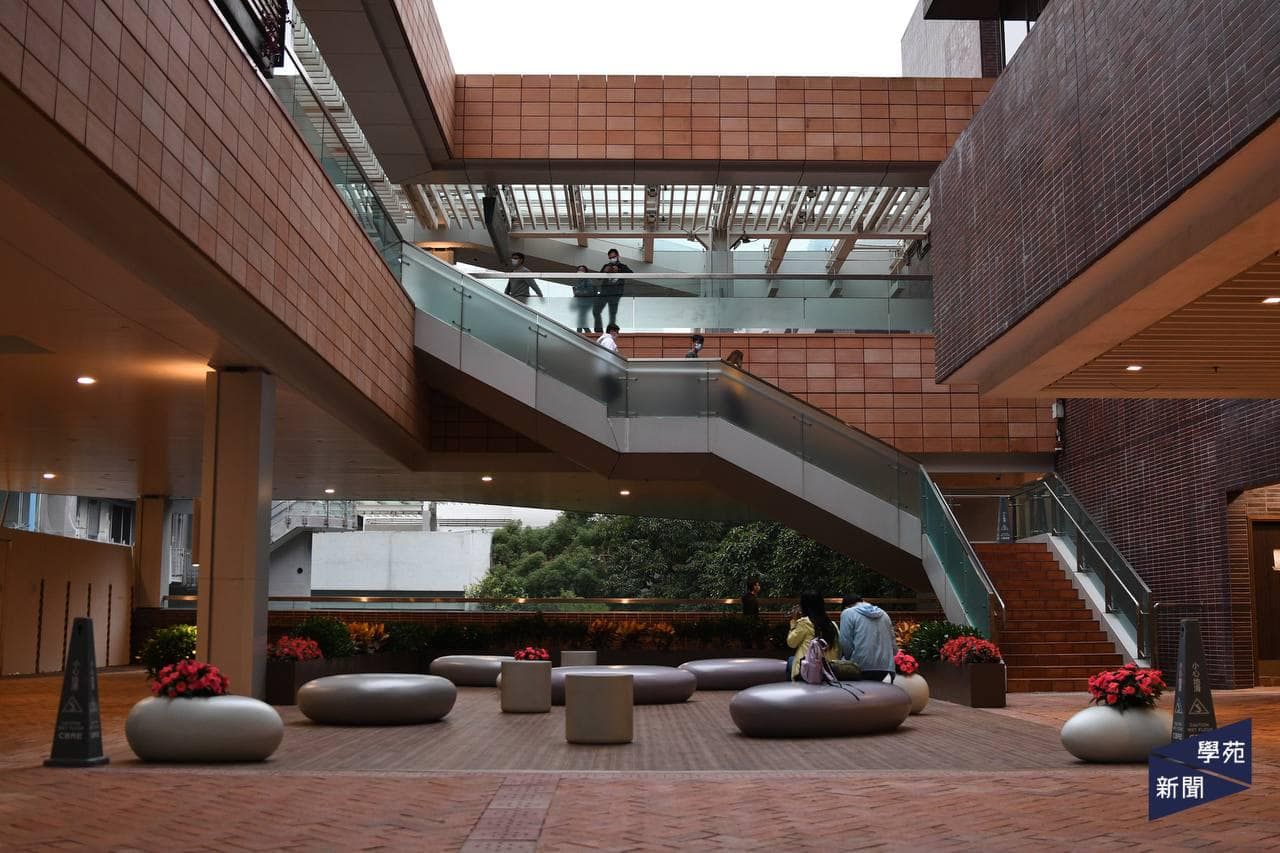
目前是明報星期日生活、藝文版記者
Notes on Pillar of Shame (恥辱柱) campaign in Taiwan

(What follows are preliminary notes for my "Cultural Heritage Studies" term paper)
History and memory loaded to the pillar - what does the Pillar mean in Hong Kong
If the June 4th Incident is an “unfinished business”, then Hong Kong’s Pillar of Shame, which commemorates it, represents/reconstructs people’ related collective memory of this Incident in Hong Kong.
The incident “captured the hearts and minds of the Hong Kong public at the time,” “Hong Kong people not only watched but also supported the movement through actions: student leaders went to Beijing, social groups purchased ad space to speak out. . ., large-scale protests were conducted, and a group of political elites formed the Hong Kong Alliance in Support for the Patriotic Democratic Movement in China (the Alliance hereafter), which would later become the organizer of the annual commemoration” (Lee & Chan).
As a symbol of commemoration, Jens Galschiøt's Pillar of Shame remains in HKU student’s impression. “For students who came to study here from mainland China, the pillar might be their first introduction to the Tiananmen massacre.” “The pillar made the rounds to several schools around the city before the Hong Kong University student union voted in 1998 to permanently host it on its campus.” HKU students scrub it roughly annually, along with the Tai Koo Bridge slogan (Podkul).
Even though localism among students have been high since 2014, HKUSU still organised its own version of June 4th commemoration events besides the Pillar, in separation of the Alliance’s Victoria Park vigil.
The Pillar means a memory of Hong Kong.
New trajectory and controversy
In October 2021, HKU ordered to remove the Pillar. While the University did not notify Galschiøt in for its decision, the now defunct Alliance received a letter to remove it within 6 days. The Alliance, of course, did (can)not reply. Galschiøt tried to get in touch with the University but failed in pleading to retrieve the artwork (Podkul).
At 10pm, 22nd December 2021, the University’s student press Undergrad reported that fences were placed around the artwork. Later that night, Citizen News reporters heard noises that resembles sawing, though nobody could make sure what went on to the Pillar. The reporters stayed around and photographed the process construction workers moved the Pillar that bundled with white plastic wrap to a shipping container. The light nearby shut off, the Pillar is gone (Citizen News).
The University issued a statement the next morning, announcing that it has consulted legal advice and decided to remove the Pillar to accord the University’s overall interest. It claims that it had never permitted anyone or any group to place the monument in its campus, and has the rights to take appropriate action anytime (Citizen News).
Now the former site of the Pillar is a seating area—clean, cozy yet weird (Podkul).

In response to the removal, Galschiøt publicised the sculpture’s copyright, and put its mini-version online for free 3D printing (with the help of Lady Liberty’s model) on 18th November 2021. The artist himself, urges the global community to “3D Print it out and join the action and spread it on social media and other platforms” so the memory of June 4th memory could be kept alive (Galschiøt).
In the meantime, several organisations worldwide, including Taiwan, Norway, United States and Hungary, requested to replicate the Pillar in their countries; they want to 3D-print larger versions of the Pillar (Podkul).

Shifting objective/meaning of the pillar
The artist‘s original intention of creating the Pillar, however, is not limited to remind people of the Massacre. Galschiøt stated on its website that, “[o]ver the next ten years, a Pillar of Shame will be mounted once or twice a year to remind us of a shameful event which must never reoccur. . . . Each sculpture will be provided with a base to place it in the concrete local context” (Galschiøt).
The pillars was hoped to serve as reminders of local/specific events that 1) have “considerable human consequences and costs when we choose to use violence to achieve our goals,” 2) humankind “are responsible for the treatment we allow human beings to undergo,” and 3) is “a violent event which has taken place ought not to be forgotten.” It had not been a “June 4th Incident Pillar” (Galschiøt). In particular, the artwork’s appearance reflects this stance. He sculpted the vague faces to present diverse races and ethnic groups to be universal (Podkul).
And yet, after undergone continuous pushes from HKU, the artist now is preoccupied with the goal to raise awareness of Hong Kong’s fight for (China’s) justice and democracy (Podkul).
Thanks to the rise of 3D printing, Taiwan’s New School For Democracy (華人民主書院) plans to replicate one Pillar of Shame through crowdfunding; the School set the goal of NT$640,000 for 3-meters-tall replication, and NT$1,500,000 for 5-meters-tall version.
Supporting plan, Professor Wu Rwei-ren clarifies the project's motivation does not limit to June 4th Incident. He said in press conference, Pillar of Shame commemorates any tragic humanitarian crimes; June 4th is not the only one in the category. He thinks Taiwan as a democratic country, should contribute its part to ending human sufferings (TNL).
The crowdfunding project had provoked Taiwan netizens’ reactions. In the first glance, the debate surrounded the Pillar’s widely-known Chinese translation “Pillar of National Shame (國殤之柱)”. Although groups that support the plan used a different translation “Shame Pillar (恥辱柱)”, removed the “national” part of the phrase, its former translation had still been used in media and discussions. Netizens asked “which nation’s shame is this?”, “why should we commemorate other nation’s suffering?”, “the business should leave for Chinese people and Hong Kong people, not us Taiwanese.”
One supporter of the plan, legislator Fan Yun, reiterates the nominal issue is a false one. She said the problem should not be the name, but the sheer unjustified removal of the Pillar and the June 4th Incident (TNL). Chiang Min-yen of Economic Democracy Union also hopes people not to stuck with the nominal issue but to start moves on to learn humankind’s suffering over Taiwan’s own land and the globe (Chiang).
While it is hard to measure how persuasive these supporters’ clarifications are, the crowdfunding now (14:02, 17th April 2022) received only NT$247,015, i.e. 38% of its minimal goal; only 39 people backed this project. They have merely 14 days left for the backing.
The ownership requirement: Who’s collective memory?
Yes. The nominal issue is a false one, but a novel translation does not help. From what the supporters said, their primary intention to replicate the Pillar in Taiwan is still to fill spaces for commemorating June 4th Incident that Hong Kong has just lost. Other humankind tragedies are at best included in its contingent purpose.
The real issue is the sense of ownership: (many) Taiwan people are just not seeing either June 4th Incident or its commemoration in Hong Kong as their history, concern, at least not the same way people in Hong Kong see them.
David Rieff, in his book In Praise of Forgetting, argues that “the essence of historical remembrance consists of identification and psychological proximity” (Rieff). No matter how politically incorrect it may be to point out, if national history and memory are essential elements to the building of national identity, then the influx of Hong Kong people’s/-related memory will threaten Taiwanese localism/nationalism, which has been on the rise in recent years.
To Hong Kong people/democracy movement sympathisers, the wish is to keep the bearings and witness of CCP’s shameful history worldwide. “How can people forget this massacre?” Yet the bearings are just incommensurable to other people. Although Taiwan people may agree that June 4th Incident is horrible, the commemoration should go on. They may still hesitate they should be the bearer of this commemoration.
Worse, when localism gradually becomes the mainstream among Taiwan youth generation, commemorating a “neighbouring country”’s difficult past is what stand in the way to local identity building. Resistance is not totally unexpected.
This is not to say Hong Kong and Taiwan people are sharing different moral codes. However, people plainly have to make the decision on what needs to be remembered and how much remembrance is enough.
The New School For Democracy can of course raise money from other sources, to create the monument despite negative reactions. Yet, the problem is to keep the monument vividly alive. For if the monument is build, but few people is interested to visit and understand it, what is the use of this effort? Would the Pillar not be a mere stone that fades away from public eyes?
In Erich Hatala Matthes’ article, he argues that for a heritage to give rise any moral obligation, the situation must fulfil both cognitive, evaluative and affective requirements. First, people regard and emotionally identify the past as one’s own. Second, people believe the past as one’s own, one’s story — “If it is not mine, it is not heritage: it is just history.” Last, people involves and value with the past with a special degree of emotional identification — a concern that goes above and beyond one’s concern for past in general (Matthes).
We might feel pity that people do not seriously concern with historical injustice just because they do not feel proximity to the injustice. Whatsoever, maybe we should not demand too much and view this humankind’s presumed limitation as a reality and work in better ways.
A defective campaign
Legislator Lin Ching-yi challenges the plan that “one must be clear which nation’s shame it is before discussing about the Pillar of National Shame.” She said, “Taiwan had many time been categorised into a different country, into China. To commemorate a country which its state does not accept the shameful history, would it not be interpreted as commemorating ‘our country’’s shameful history?”
Lin continues, “Yes, human right is a universal value. Taiwanese concerns with Ukraine, China, Hong Kong and Syria and etc.’s international human right issues. Yet, at the end, each county need first to fight for own survial, before others come to help you.” Her Facebook post received more thant 6.5 thousands likes (LTN).
This strong reaction reflects the lack of research and evaluation before the New School For Democracy’s crowdfunding project. Unlike war or genocide related sites, which practitioners may not gain access to local context and people (Simic), the campaigners of this Pillar replication project have the means to consult Taiwan citizens beforehand.
Perhaps the grief towards the Incident and Hong Kong’s rapidly worsening political environment is too high, so the focus of the artist and campaigners are wholly on the victims and the regime; the receiving country, Taiwan, ‘s context is therefore neglected. Yet, without enough understanding to local context and opinion, attempts at building the Pillar, as a symbolic heritage, can hardly be successful.
In 1996, Galschiøt believes that “[i]n situations where the authorities have committed the atrocity, the sculpture (representing the victims) will be very difficult for them to move”, since “[i]f they blow it up, they are displaying brutality when they probably are more interested in keeping a low profile” (Galschiøt).
Parallelly now, if campaigner set up a new replicated monument without consulting the public there, the sculpture will also be very difficult to place with meaning.
喜欢我的文章吗?
别忘了给点支持与赞赏,让我知道创作的路上有你陪伴。
发布评论…